Taxa List
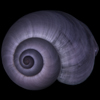 |
Janthina |
Small to medium-sized pelagic sea snails, commonly known as purple snails or violet shells. These snails live at sea-air interface. |
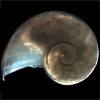 |
Pteropods |
Small, swimming pelagic snails, commonly known as "sea butterflies." |
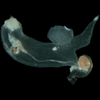 |
Heteropods |
Molluscs with reduced shells, medial swimming fin, well developed eyes and a nearly transparent body; size to 300 mm. |
 |
Segmented Pelagic Worms |
Segmented worms with well developed, paired, paddle-like appendages. |
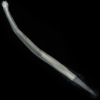 |
Chaetognaths |
Nearly transparent, flattened worm-like animals with side fins and tail fins; adults ~ 2 - 120 mm. Commonly referred to as "Arrow Worms." |
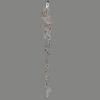 |
Siphonophores |
These are colonial animals, mostly transparent, with many specialized parts; relatives of jellyfish. A pneumatophore is a gas-filled float positioned at the top of the colony in some siphonophores. |
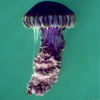 |
Jellyfish |
Often transparent, bell-shaped marine animals with hanging tentacles; body more than 95% water; size varies. |
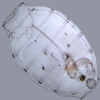 |
Pelagic Tunicates |
Nearly transparent marine animals, body mostly water. Four pelagic groups: salps, doliolids, appendicularians, and pyrosomes; each is covered by a thin or thick tunic. |
 |
Ctenophores |
Transparent marine animals with eight rows of cilia. Body is ~97% water, size from a few mm to several cm. |
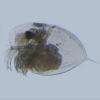 |
Cladocerans |
Commonly called "water fleas." Bear a large, anterior compound eye, and carapace covering most of the body. |
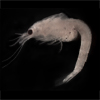 |
Mysids |
Shrimp-like crustaceans with spherically shaped statocysts (balance organs) on the uropods (tail fan). |
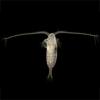 |
Copepods |
Small planktonic crustaceans, adult size from ~ 0.2 mm to 10 mm. Ubiquitous. [N.B. >250 species are reported |
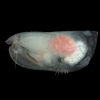 |
Ostracods |
Small crustaceans (0.5-6.0 mm) with a bean-shaped bivalved carapace, commonly known as "mussel or seed shrimps." |
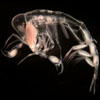 |
Hyperiid Amphipods |
Small crustaceans (2-42 mm) with large, compound eyes; some species associated with gelatinous zooplankton. |
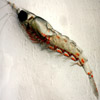 |
Euphausiids |
Pelagic shrimp-like crustaceans with exposed gills, well-developed eyes; most species have 10 photophores. Adults of local species are smaller than 30 mm. |
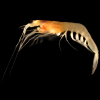 |
Decapods |
True shrimps, and larvae of lobsters and crabs. The eyes are often stalked and the gills are always covered by the carapace. The larval phase is planktonic while the adults may be planktonic or benthic. |
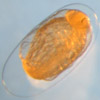 |
Fish eggs and larvae |
The planktonic stages of some common local fish, often not bearing any likeness to the adults. |
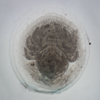 |
Invertebrate larvae |
Meroplankton: planktonic stages of local species that are often benthic as adults. |
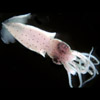 |
Squid |
Cephalopods with eight arms and two tentacles, body often covered with chromatophores (pigment cells). |
